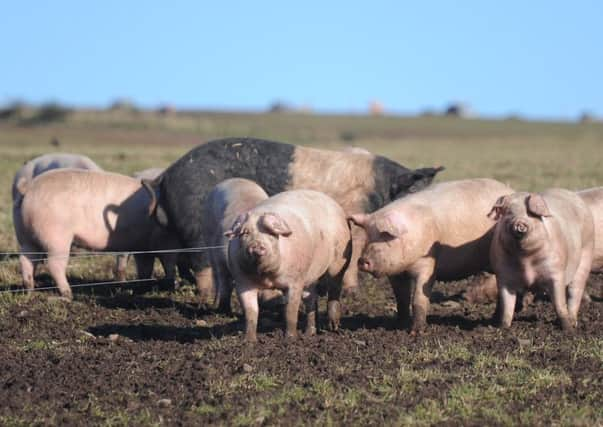Cereals drop as potatoes, pigs and poultry increase
This article contains affiliate links. We may earn a small commission on items purchased through this article, but that does not affect our editorial judgement.


The figures, which are drawn up by the Office of National Statistics also showed a reduction in the agricultural workforce and in the number of secure tenancies.
The cereal area – which stood at the lowest level since 2010, was back 12,400 hectares (3 per cent), with barley down 20,700 hectares (7 per cent). The area of wheat remained similar to last year, while that of oats rose by 5,600 hectares. Oilseed rape area was also back 15 per cent – but fallow land increased markedly for the second consecutive year, this time up 10,000 hectares to 43,000 hectares.
Advertisement
Hide AdAdvertisement
Hide AdPotatoes saw a small increase, of 1,800 hectares (7 per cent) to 27,500 hectares, bouncing back from last year’s poor figures. However, the area is still the second lowest since 1994.
Cattle numbers remained fairly constant at 1.8 million, but were at the third lowest level since the 1950s. There was very little change in either dairy or beef numbers. Sheep numbers increased for the third consecutive year, up 125,000 (2 per cent) to 6.8 million, but are still lower than in 2009.
Pig numbers were up 12,500 (4 per cent) to 330,000, the third consecutive rise.
Poultry numbers increased eight per cent, bouncing back after last year’s 11 per cent fall. The figure of 14.1 million, similar to the longer-term average, included 6.5 million broilers (up 15 per cent) and 6.3 million layers (up four per cent).
There were 63,400 people employed on agricultural holdings. This was down 1,900 on 2015, and is the lowest figure on record.
There were 430,000 migrant working-days reported during the year, down 7 per cent on 2015. The number of migrant workers is not collected. 23 per cent of land was rented, very similar to 2015, with a fall in 91 Act secure tenanted land of about 46,600 hectares and an equivalent increase in Short Duration Limited Tenancy (SDLT) land.
Commenting on the figures, rural economy secretary Fergus Ewing said that the number of migrant working days reported during the year, clearly outlined the continuing importance of EU nationals to Scotland’s farming workforce.
He added: “Any move to limit migration, whether from within or beyond the EU, has the potential to seriously harm our rural economy and disrupt the lives of families who have settled here.”
‘Fallow has been the preferred choice’
Advertisement
Hide AdAdvertisement
Hide AdCommenting on the decline in the cereal area, NFU combinable crops policy manager Peter Loggie said that the reductions mainly reflected the continued poor returns for grain and oilseed rape.
However, he criticised what he termed the Scottish Government’s “unhelpful rule changes” on ecological focus areas (EFA), holding them responsible for the considerable drop in the area of peas (back 47 per cent) and beans (back 26 per cent).
“The combined area of those crops is now around 20 per cent lower under the new CAP when compared with the five years up to 2014 – undermining the intention of the EU to increase protein crop production and to reduce dependence on protein crops imported from distant countries,” said Loggie.
He added that the large increase in fallow area was also due to the complexity of Scotland’s greening measures regime: “Fallow has been the preferred choice due to the complexity of rules for the other EFA options (especially Nitrogen Fixing Crops) but more land is also being placed into fallow due to the ongoing poor returns for cereals and oilseeds.”
The union’s director of policy, Jonnie Hall, said that against the prevailing economic backdrop in agriculture it was unsurprising – but disappointing – that the agricultural workforce had fallen to the lowest level on record.
“With farm incomes having halved in the past four years and declining levels of support, many businesses are pruning back on full time labour. Instead, they are opting to use family, part-time labour, machinery rings and contractors more and more.”
He added that until confidence – dented by Brexit and other issues – was restored farmers were likely to continue cutting costs such as the businesses labour bills.